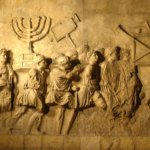Hasidic Judaism is known in Jewish lore as being the movement that brought joy back to the religion. It was founded by Rabbi Israel ben Eliezer in the 18th century during a time when the Jewish people were greatly persecuted as well as factionalized against themselves. This movement is thought by some to be the single most important event in Jewish history after the formation of the religion.
What Hasidism brought to the religion?
It is important to realize how bad things were before you can appreciate what Hasidism brought to the religion. The practitioners were divided over traditional Rabbinic Judaism and the controversial new Kabbalah methods. The establishment viewed Kabbalah as mystical nonsense. There was also general depression because of events like the Cossack Uprising and the wars in Poland.

And above all, there was a feeling that the current method of practicing the faith and its social equivalents was far too restrictive and academic to allow for any sort of spiritual joy, which was equated with the essence of spirituality itself. The religion at the time for many felt like a hollow shell of what they had intended it to be.
After creating and promoting this new faction, people started taking to it in great numbers. The majority of Jewish people soon assimilated themselves with this new faith and abandoned the Rabbinic version of the faith entirely. The requirements of fasting, extreme self-denial, and self-loathing were abandoned for a less demanding and more content approach. This new variation was concerned not with technical detail but with spiritual improvement through a moderate method. The new practitioners were concerned more with the passion of the religion than performing what had been perceived to be hollow rituals.
The Master of the Good Name
The founder Israel ben Eliezer was known as a great healer and often called “The Master of the Good Name.” There were even rumors that he possessed other powers such as foresight and intuition. His approach seemed transparent to the people of the day, and for that, he was revered. He taught that scholarly knowledge is not to be valued above or even on the same level as the love of God and belief in the power of prayer.
He made explicit the point that a man well versed in scripture who does not have passion for his professed beliefs is nowhere near as important to God as a man who believes in Him and prays with true passion.
In around 1740 he gathered some followers around him and initiated them in the new order not with a complicated ritual but simply by saying a few easily understood Kabbalistic parables. These sayings were spread by word of mouth like wildfire. The disciples would later put the teachings in writing.
The Critics of the new sect of the faith
Even early on there was a multitude of critics of the new sect of the faith. Many traditional rabbis did not like the Kabbalistic approach and there were many who were openly skeptical about Eliezer’s reputation as a “miracle man.” Despite this, the faith grew in strength exponentially until it became the bedrock foundation we have today.






